We sailed overnight, docking in Schweich in the early morning hours. We went up on the Sun Deck before breakfast and enjoyed the dawn and the morning quiet before having breakfast and departing on our excursions.

Diane went to Trier; I went to Luxembourg (a new country!). My tour’s first stop was the Luxembourg American Cemetery and Memorial, which was established during the Battle of the Bulge in World War II.
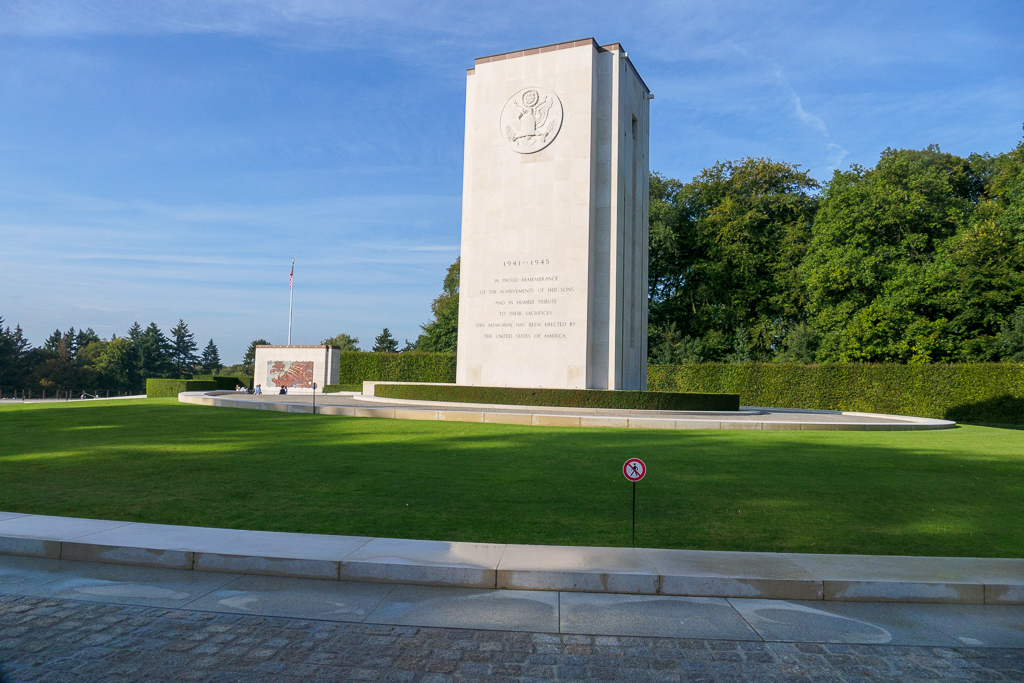
Most (but not all) of the servicemen (and one servicewoman) interred in the cemetery died during the Battle of the Bulge, and there is a large map showing how the battle progressed, from the Germans’ first counteroffensive through their final defeat.

There are 5,076 graves on the site. It’s a sobering experience.
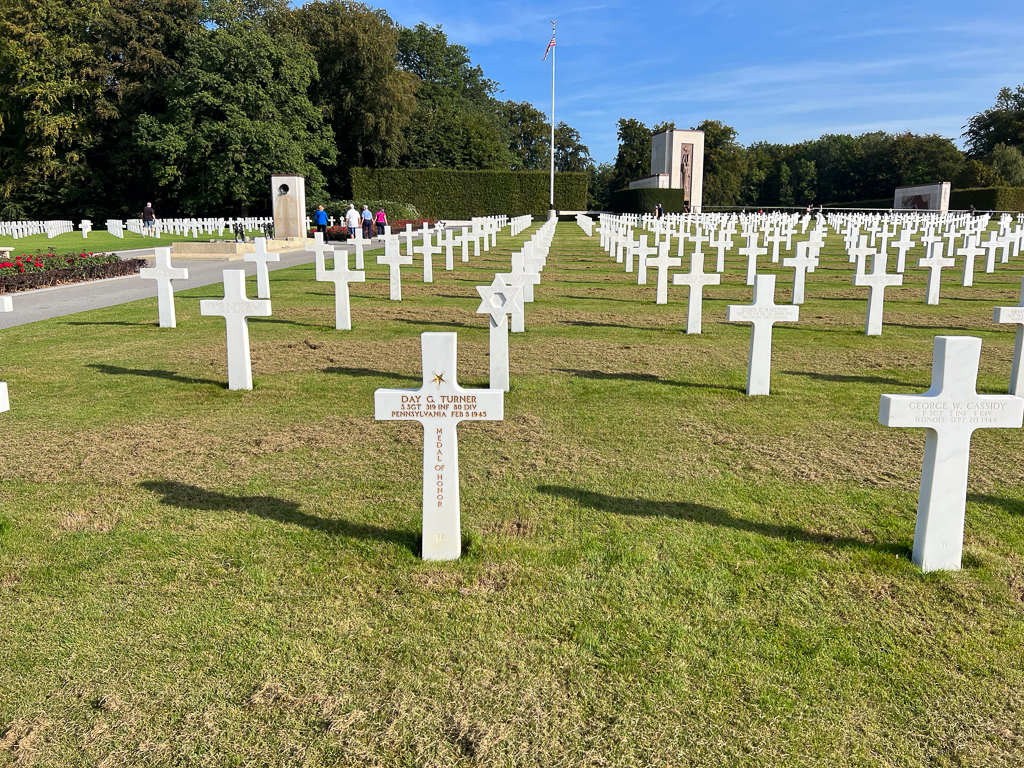
We then drove into Luxembourg City for a walking tour. We parked outside the old city, near the State Bank.

We saw the defensive fortifications which kept Luxembourg independent through most of its history as we crossed the bridge into the main part of the city.
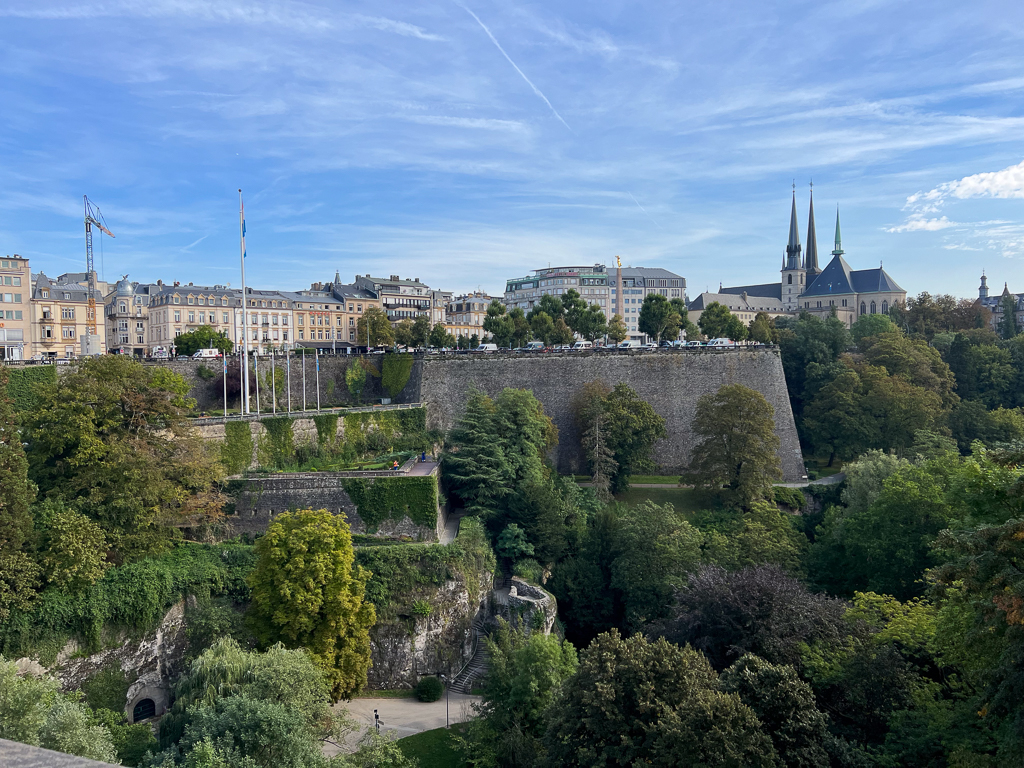
We walked to the Monument of Remembrance, dedicated to the Luxembourgers who served in the Allied Forces in WWI, WWII, and the Korean War.
Our next stop was the Notre Dame Cathedral.
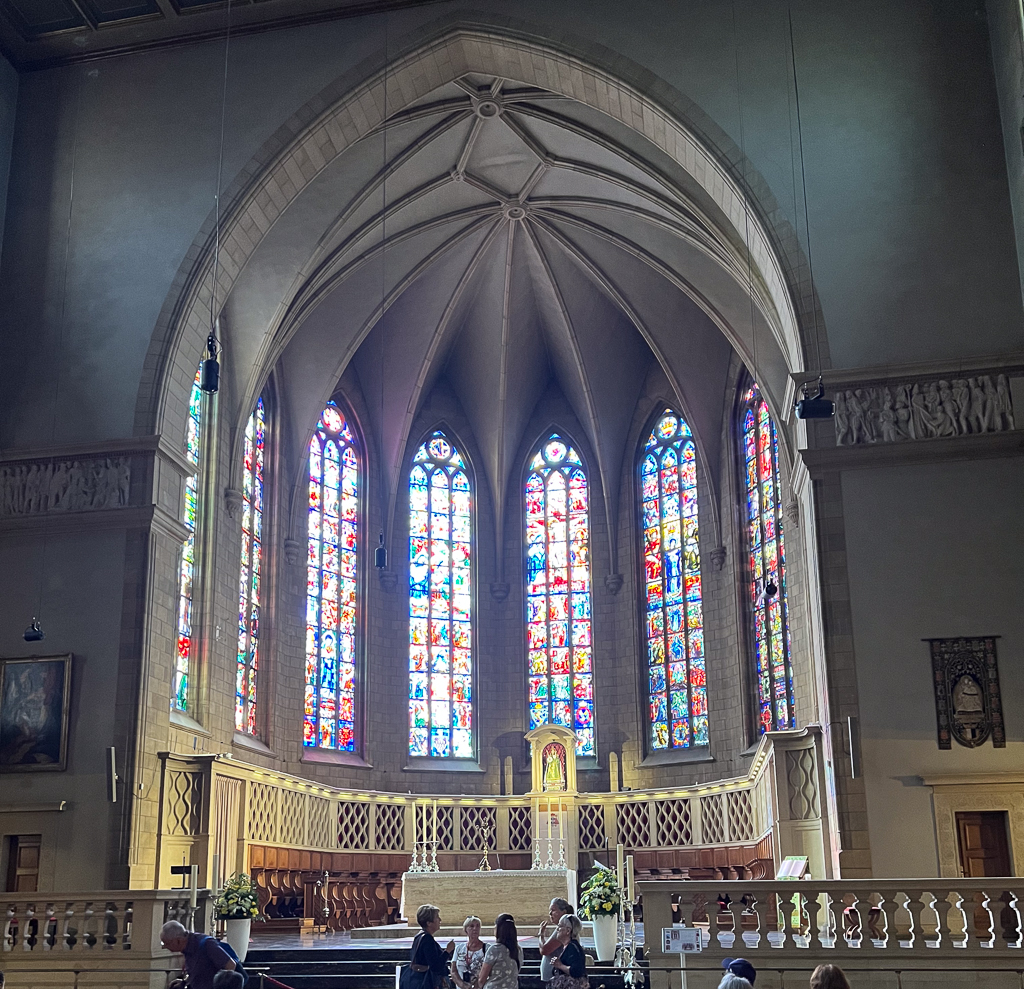
The Cathedral is only a few blocks from the Parliament and the official residence of the Grand Duke, which has (of course) a guard of honor.
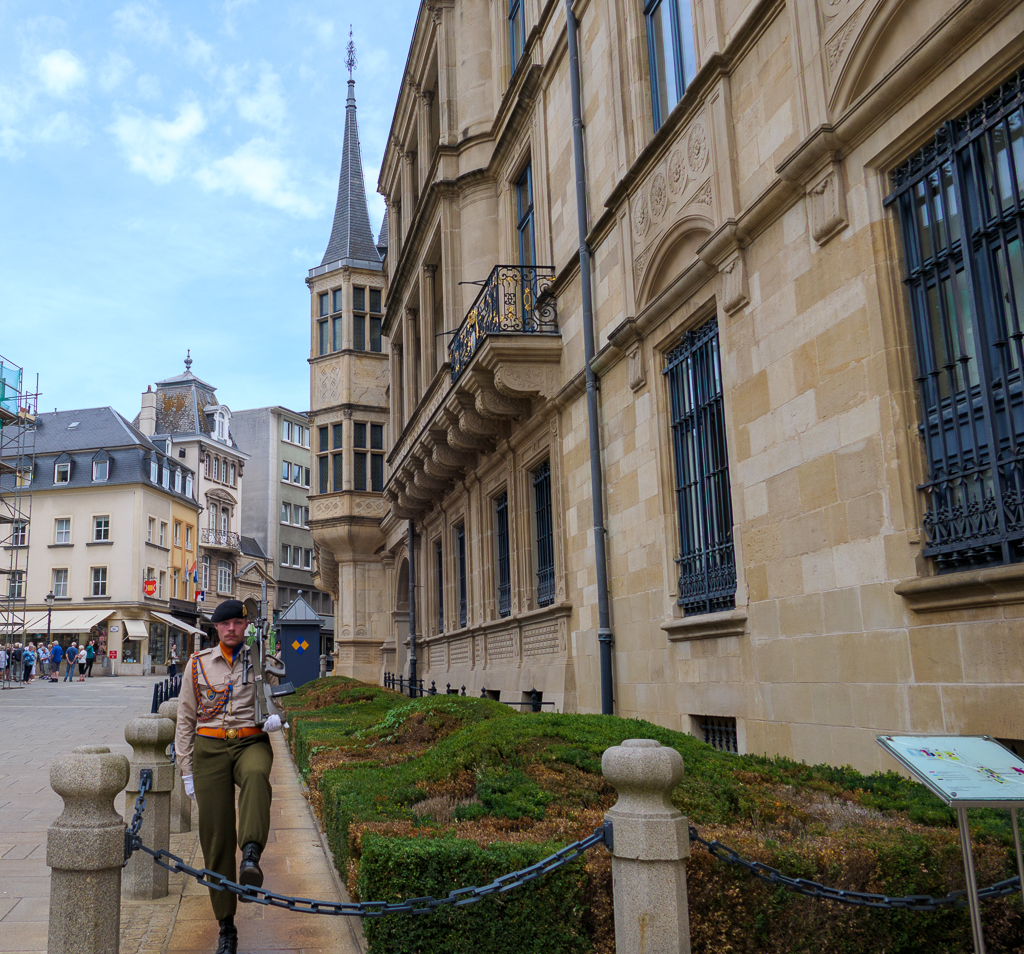
Our guides turned us loose for an hour of exploration before we had to return to the bus; I enjoyed a glass of the local cremant sparkling wine with my friends Karen and Rick and then went in search of interesting shops and souvenirs (with limited success).
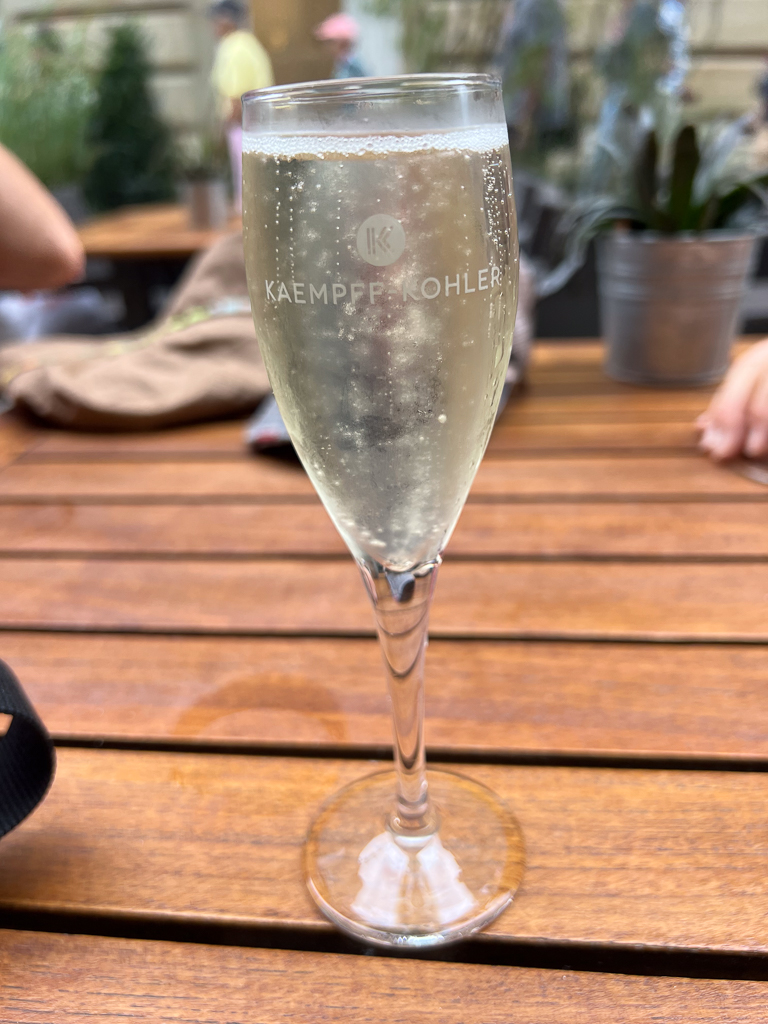
After lunch, Diane and I took the bus into Trier, which has the most Roman ruins of any city in Germany. The bus dropped us off just outside the Porta Negra, which led us into the city center.
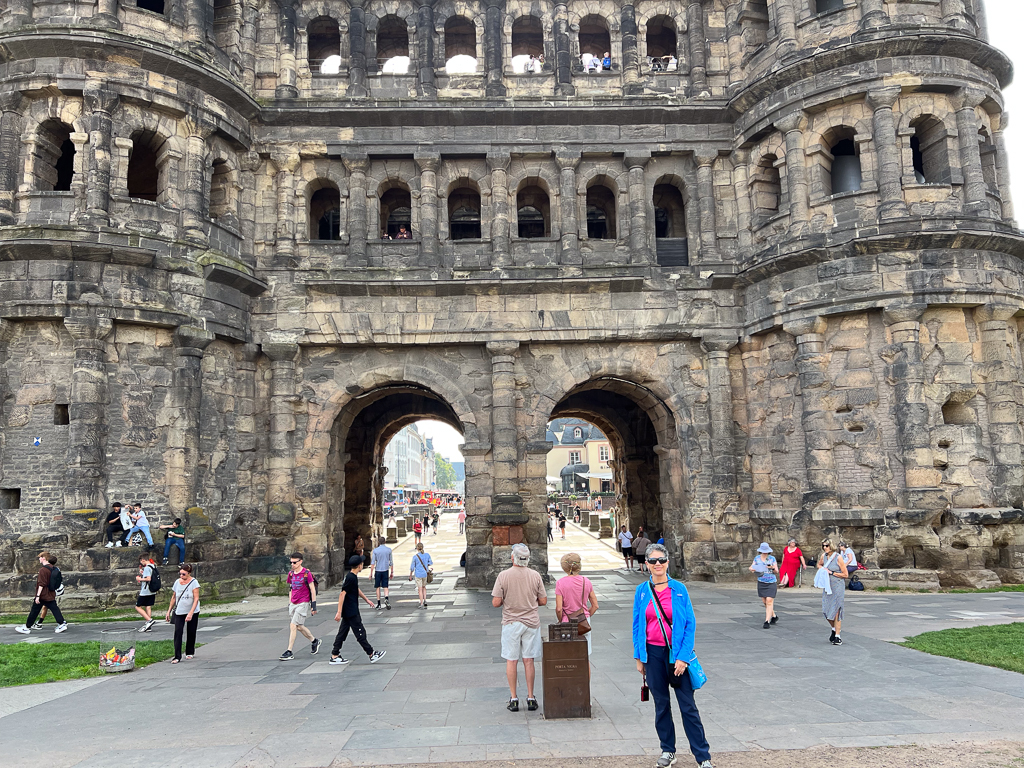
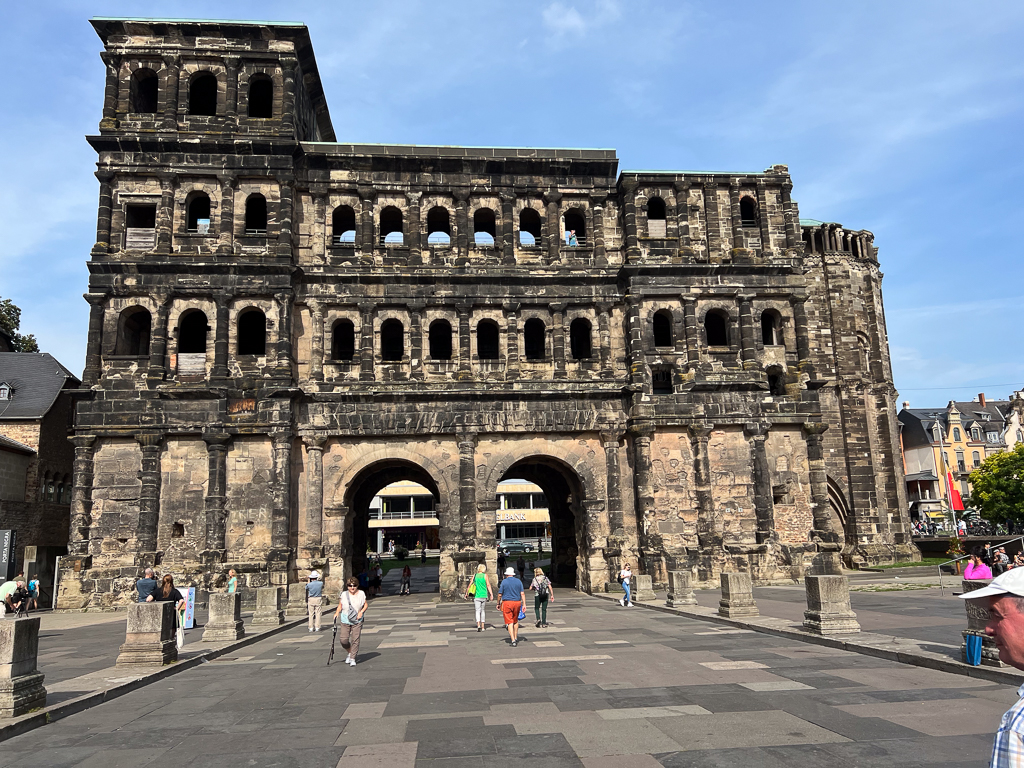
We bypassed the shopping district and headed towards the Palastgarten near Constantine’s Basilica. We wandered through the Palastgarten and spent a little time watching a fountain.
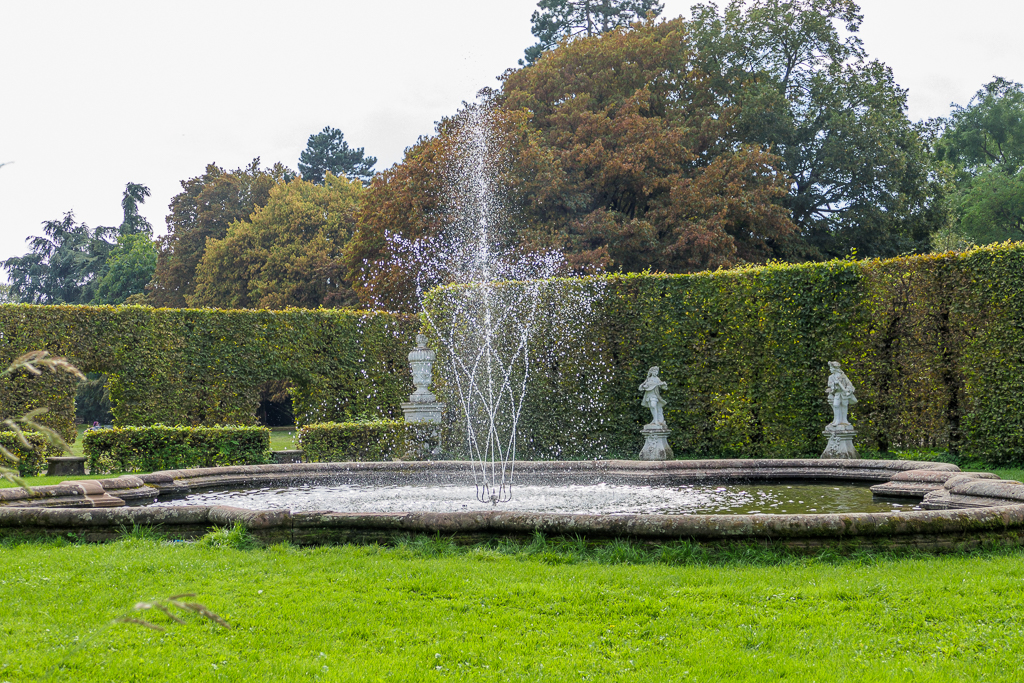
We walked by the Kaiserthermen (Imperial Baths), which was started by Emperor Constantine I but never completed. I guess the new administration didn’t want to fund it!
We walked over to the New Trier Synagogue, established after WWII by 14 returning Jews and some Allied soldiers. The congregation grew significantly with the influx of Jews from the Former Soviet Union, and it now numbers about 500 members.
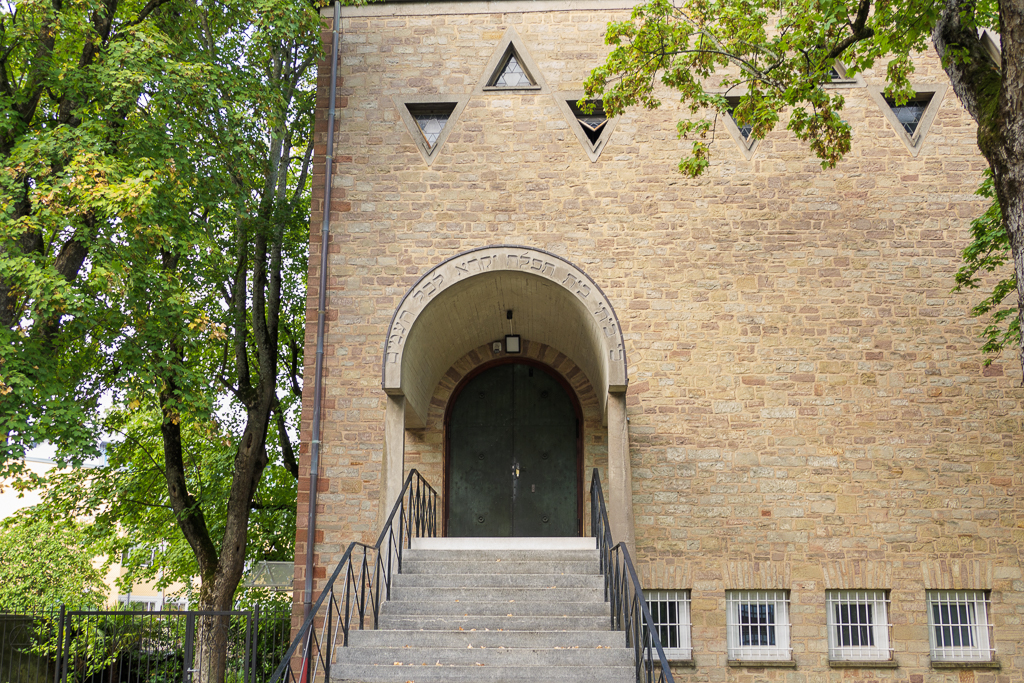
Our next stop was in front of the Karl Marx Museum, located in his birthplace on Brückenstrasse.
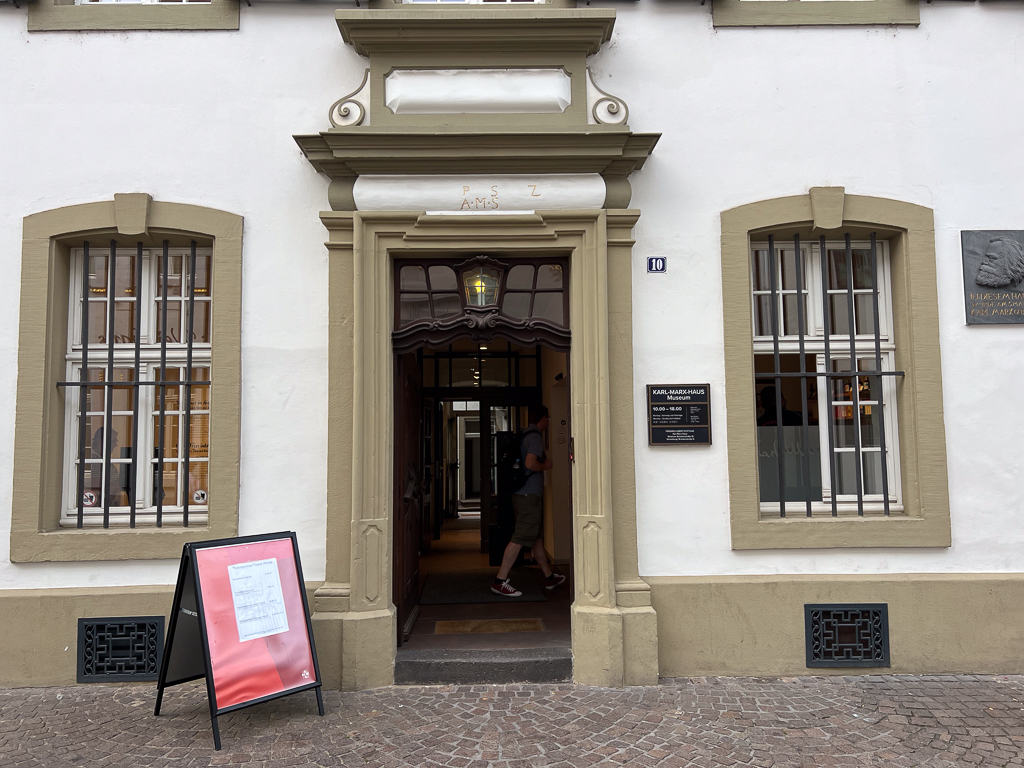
We started walking back to the Porta Nigra to meet the bus back to the ship. The Grasshopper Fountain, dedicated to the Trier Carnival Society caught Diane’s eye.

Trier has a lot of fountains; the last one we stopped at was St. George’s Fountain in the Kornmarkt.
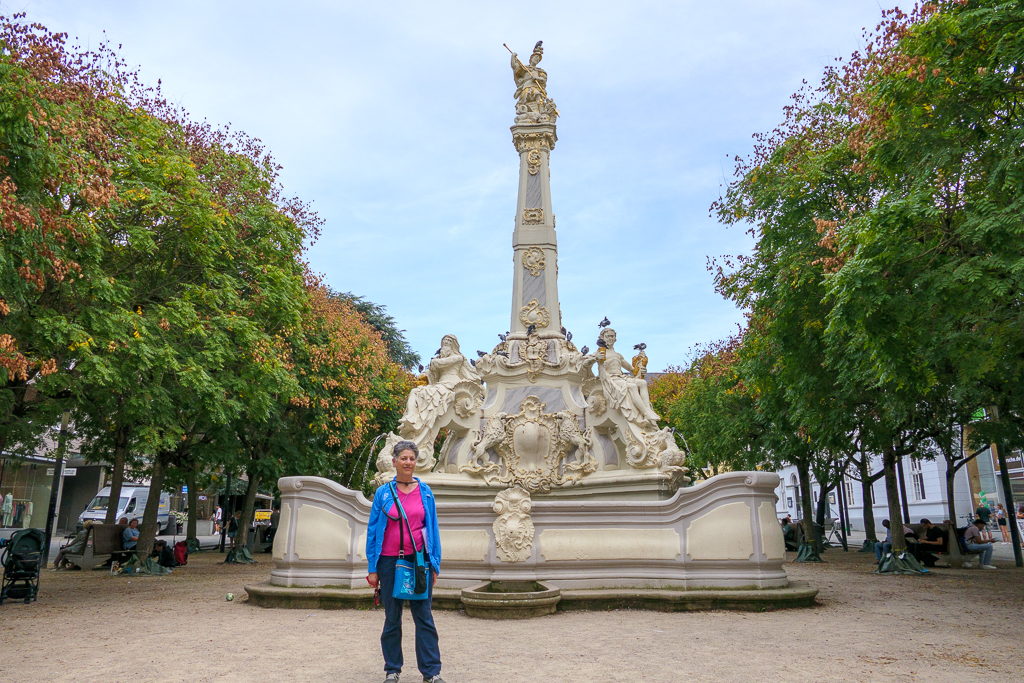
It was a hot afternoon, so we stopped at Eiscafe Siena for a delicious lemonade before getting on the bus for the ride back to the ship.
When we got back to the ship, I tried to take out the camera battery to recharge it. It had started to bulge out, so it was hard to get it out; I was able to give it to the ship for safe disposal. I’d already gotten a refund for the batteries, so I guess I can’t complain!